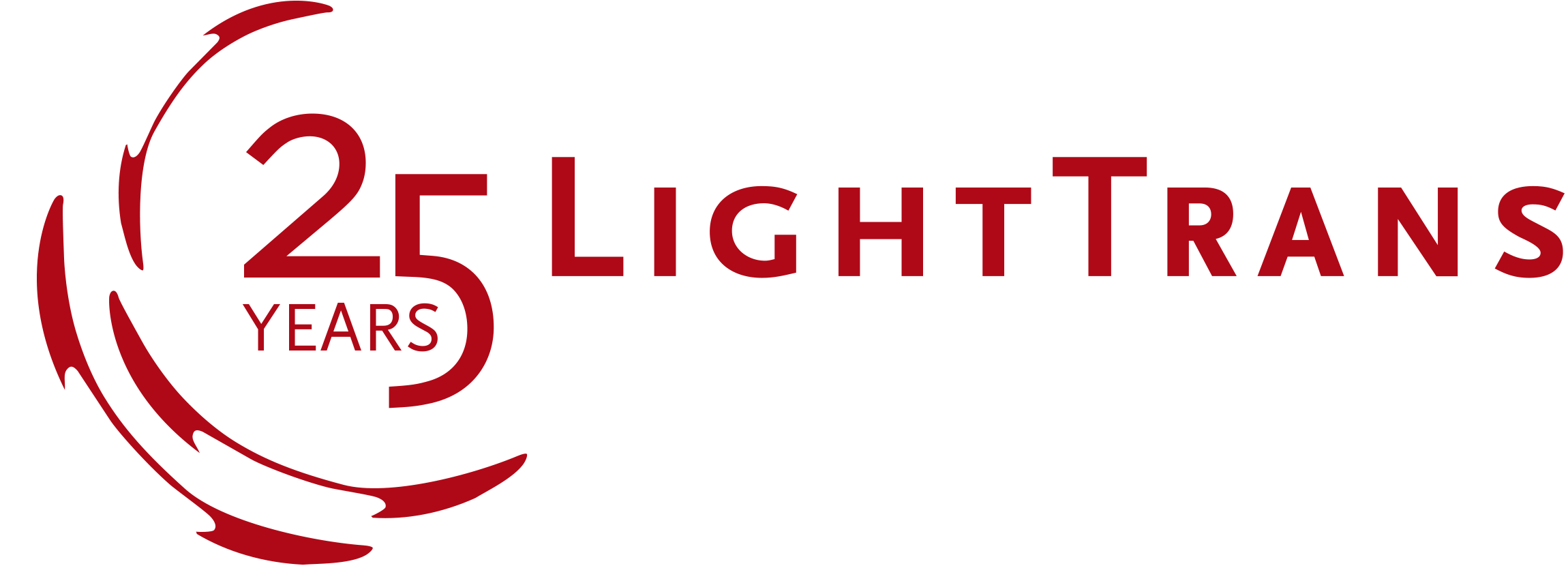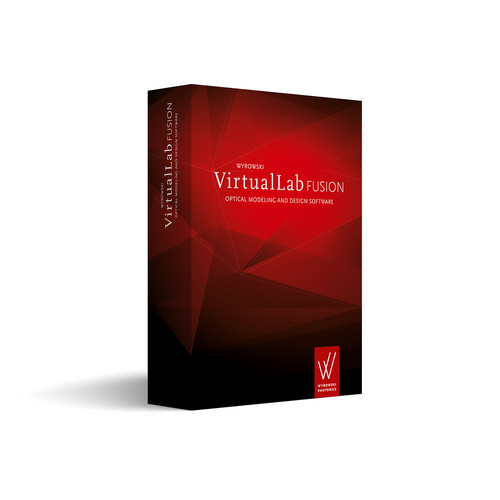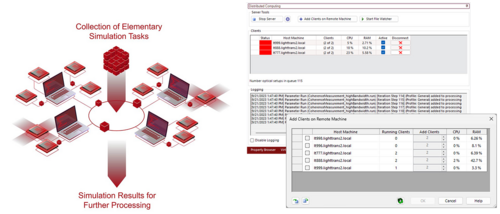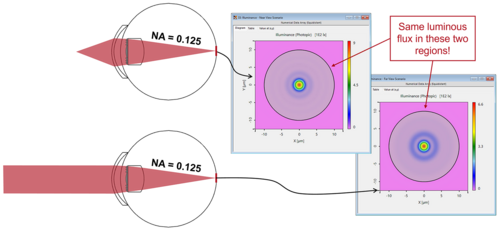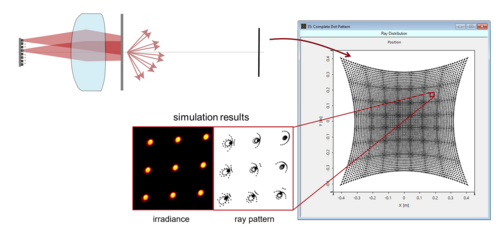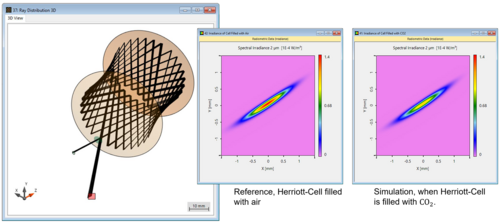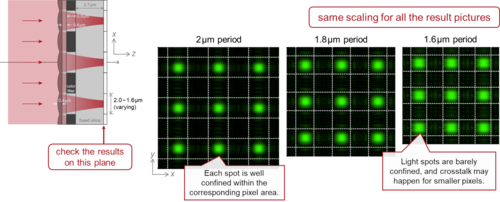What’s new in our Optical Modeling and Design Software?
Parameter Variation Analyzer
Multiplexing is a cornerstone of optical design: whether the task is to come up with a setup which can perform its intended function well under different conditions (for example, an augmented-reality device which must work for a certain field of view), or to carry out a tolerance analysis of a given design, it is often desirable to calculate a single merit function which encompasses multiple different configurations of the same system. This helps us characterize the behavior of said system over a certain parameter range with a single measure.
For exactly this purpose, VirtualLab Fusion’s brand-new release 2023.2 introduces the Parameter Variation Analyzer. This flexible and powerful tool offers the capability to process the results of multiple detectors and/or multiple iterations from e.g. a parameter sweep into a freely customizable result, which can then be employed as the merit function of an optimization, for instance.
In the documents below we have prepared for you a deep-dive document into this new feature as well as an application example in the form of a CIGS (copper indium gallium selenide) solar-cell. In this example we use the Parameter Variation Analyzer to combine the values from 4 detectors and finally calculate the energy absorbed in the CIGS layer.
As Accurate as Needed, as Fast as Possible: New VirtualLab Fusion 2023.2!
We are proud to announce the release of the latest version of the optical modeling and design software VirtualLab Fusion, 2023.2!
The signature technology of VirtualLab Fusion is its interoperability of modeling techniques on a single software platform, which allows you to have full control of the balance between accuracy and speed that is always an unavoidable aspect of simulation technology. Version 2023.2 expands on this concept, pursuing the development goals we have set ourselves to offer ever higher speed, easier use, more physics, deeper transparency, and more control.
Distributed Computing
The new release of VirtualLab Fusion – version 2023.2 – is here, and with it come exciting new features. One of the most important, which we would like to highlight in this week’s newsletter, is the Distributed Computing Package.
This tool is aimed at drastically improving simulation times for those complex problems which are composed of multiple elementary simulations, such as parameter sweeps or tolerance analysis. The Distributed Computing Package makes it possible to allocate the individual elementary tasks to different machines (computers/servers) in a network, so that they are calculated in parallel, thus decreasing overall simulation time.
Please take a look at the documents below for a deep dive into the new technology, as well as an application scenario where we drastically improve simulation times for a white-light interferometer example.
Diffractive Lenses for Medical Applications
Hybrid lenses combine the advantages of classic refractive components and diffractive structures, and hence have become a promising approach in different optical applications, such as intraocular lens implants for treatment of cataracts. In particular, the opposite signs of the dispersion for refractive and diffractive surfaces enable the correction of chromatic aberrations.
In order to model and design such a hybrid element accurately, the in-depth analysis of diffraction effects through the system is a necessity. This includes the evaluation of diffraction efficiencies of real structures in combination with the fast and accurate calculation of the point-spread function (PSF). VirtualLab Fusion’s highly flexible approach of interoperable modeling techniques on a single platform is key to enable the precise and quick modeling of classic lenses and calculation of the diffraction efficiencies of the different orders of a diffractive lens.
To illustrate the capabilities of the software in this regard, the near and far field view of a designed hybrid lens are analyzed in the example. Moreover, the effect of varying the height of the designed binary element on the diffraction efficiencies is investigated to further optimize the optical function. In order to evaluate the resulting PSFs similar to the perception of a human eye, photometric quantities, such as illuminance and luminous flux, are used, which can easily be determined with the help of VirtualLab’s flexible detector concept.
Non-Paraxial Beam Splitter for Dot Projectors
Dot projectors, capable of splitting an incoming beam into a densely populated array of discrete spots, have seen a rapid increase in applications in recent history. To achieve the required high number of spots, these devices typically combine highly divergent source panels with beam splitters.
Striking the right balance between accuracy and speed in the simulation of systems like these can be quite challenging: On the one hand, the small structures of the beam splitter demand the application of rigorous methods, which tend to be computationally heavy. On the other, the simulation should be agile enough to produce results within reasonable bounds of memory use and time. Besides, often, the system will comprise not just the dot projector, but also, at least, propagation in free space, if not other, additional, optical components, such as lenses.
The extremely flexible approach of interoperability of modeling techniques on a single platform offered by the optical modeling and design software VirtualLab Fusion is just the ticket here. It permits the application of the rigorous Fourier Modal Method/Rigorous Coupled Wave Analysis (FMM/RCWA) to model the non-paraxial splitter with the necessary accuracy, while at the same time avoiding computational overkill by combining this technique with other, much faster, approaches for other potential elements in the system, whether they be propagation in free space, through lenses, or both. And all of this on a single software platform with a consistent light model, meaning that no important information is lost changing from one modeling technique to another, and also obviating the need for any cumbersome back-and-forth between different packages.
In this week’s newsletter we showcase just such a dot-projector system, providing both an analysis of the working principle of the device and a document covering its design.
Nonsequential Modeling for Multi-Reflection Systems
Nonsequential optical systems, particularly those where the nonsequentiality comes from the presence of multiple internal reflections inside a component, pose their own specific set of challenges. Decomposing such systems into a sequential equivalent is often immensely inconvenient, and always impractical. Having an inherently nonsequential modeling strategy at our disposal can, then, become a huge advantage when faced with tasks of this kind.
The modeling and design software VirtualLab Fusion offers precisely this with its Manual Channel Configuration mode, in which the so-called “Light Path Finder” performs a preliminary analysis of the paths that the light follows inside a nonsequential system, using a user-controlled energy-based criterion to determine which paths need to be followed further; this becomes particularly useful in asymptotic configurations with an infinite number of paths. The additional capacity granted to the user to open and close channels in the system at will (e.g., should only forward transmission be considered for this particular interface, or is backward reflection also of interest?) enhances the flexibility of the approach, allowing you to get results that are as accurate as needed, and as fast as possible.
In this week’s newsletter we demonstrate this concept using two different scenarios as examples. First, we show the case of a Herriott Cell, a resonator filled with weakly absorbing gas where a high number of roundtrips facilitates an accurate characterization of the absorption properties of the material. Secondly, we employ a Fabry-Perot etalon to resolve the sodium doublet.
Assistant Calculators for Optical Design Tasks
While the provision of simulation results that are as accurate as needed, and as fast as possible, is the main task of VirtualLab Fusion, the software also offers a series of convenient tools to simplify the life of optical engineers. Among others, these come in the form of Calculators, which allow the user to compute crucial parameters for the configuration of a system in-software and to transfer this information to the necessary components with the pressing of a button.
In this week’s newsletter, out of the many calculators VirtualLab Fusion provides, we want to put the spotlight on two of them. The first calculator that we are showcasing is the Coherence Time & Length Calculator, which – as the name implies – can compute temporal coherence parameters from a given spectrum. This information can be linked to the Universal Detector, allowing for the inclusion of coherence effects without the need to propagate an entire spectrum. The second calculator computes and visually represents the deflection angles of the reflected and transmitted orders of a diffraction grating, providing, alongside the exact values of the angles, a practical visual representation of how the incident light and outgoing orders are distributed in the direction space for a specific grating configuration. Take a look at the documents linked below for more information!
Simulation of CMOS Sensors
Complementary metal-oxide semiconductor (CMOS) sensors have become the dominant technology for image sensors, due to their ability to individually extract information from each pixel as well as its low cost and power consumption. The latter can be attributed mainly to the rapid down-scaling of CMOS pixel sizes in recent years. However, the small feature sizes also push the limits in terms of the function of the device, as diffraction in systems with very low numerical aperture can cause a longitudinal shift of the focal plane and a lateral expansion of the focal spot.
VirtualLab Fusion offers convenient tools and a powerful pool of interoperable modeling techniques on a single software platform, to help the optical engineer in the design and analysis of such systems, among many others. Therefore, in this week’s newsletter, we demonstrate an example where we analyze the effect of the pixel size on the overall performance of the CMOS sensor. Accompanying this example, we provide additional information on the features of the Field Inside Component analyzer, which is used in the CMOS example to visualize a cross-section of the field propagation through the entire component.
